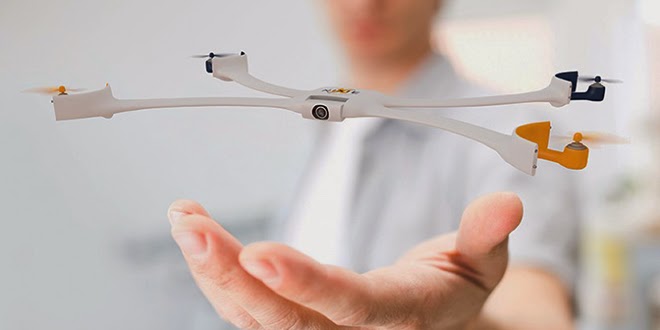
(Actually, one of these is a friend's needing recalibration and setup.)
Sparkle flew ‘OK’ with the lampshade for a few minutes but it was a little breezy and it took lots of real flying to keep the rig within a 5 foot space. It is highly unusual for a Phantom to wander that much with GPS locks acquired. Something was wrong and I decided to fly another day. The next day, without wind, Sparkle continued to act up with a concluding ‘very hard landing’. For some reason the addition of the fabric to the outside of the shade frame was problematic. Or, maybe it was the fringe at the shade bottom. Or, maybe something else. My only course of action was to shit can Lampshade 1.0 and work on a new costume. The new costume was envisioned as a space ship thingie using all blue LEDs. Each new configuration requires a new set of prop guards and I bought four more sets further depleting the kid’s inheritance.
It also dawned on me at 3AM (way
before dawn) that I simply had too much weight hanging on Sparkle. Though I
managed to get back to sleep, my unconscious brain knew that was on to
something. After my bike ride, I weighed Sparkle. 1700 grams. So what? I had no
idea as to whether that was too heavy or within reason. I turned to the forum
and found that most folks posting had their head up their butts. (I sometime
wonder whether these dronies actually have a Phantom let any person drone at
all.)
With no help there, it dawned on
me to weigh Tommy. After all Tommy has a 3D-3H gimbal, Fatshark video
transmitter and a GoPro. Tommy weighs about 1500 with instant connect prop
guards*. I really didn’t think the 200 grams was the issue. However I was all done
with using the metal wire frames from Michael’s.
The next morning at 3AM I
decided to use thin bamboo. Not exactly the easiest thing to find as it turns
out. After a few glasses of wine that night it flashed across my brain that I
might be able to use the bamboo frame from inside those Japanese paper lanterns.
(Maybe Chinese. Not sure about that.)
Off to Pier One or whatever they
called these days. Bingo! 36” paper lantern. Well, not lantern but lanterns. I
needed three. As it turns out, you can use smaller ones and soak the bamboo to
spread and fit around Sparkle’s new set of prop guards.
The second costume for Sparkle (Big
Blue) went together nicely and flew much better that Lampshade 1.0 which was
now in the trash can. Keeping lights to simply strings with no encircling cloth
seemed to be one the right track. https://www.youtube.com/watch?v=yytHj32JXTk
With Big Blue meeting expectations,
I turned to making Lampshade 2.0. Bamboo frame, short external fringe but still
with cloth around the frame for a real lampshade look. We’ll see!
























